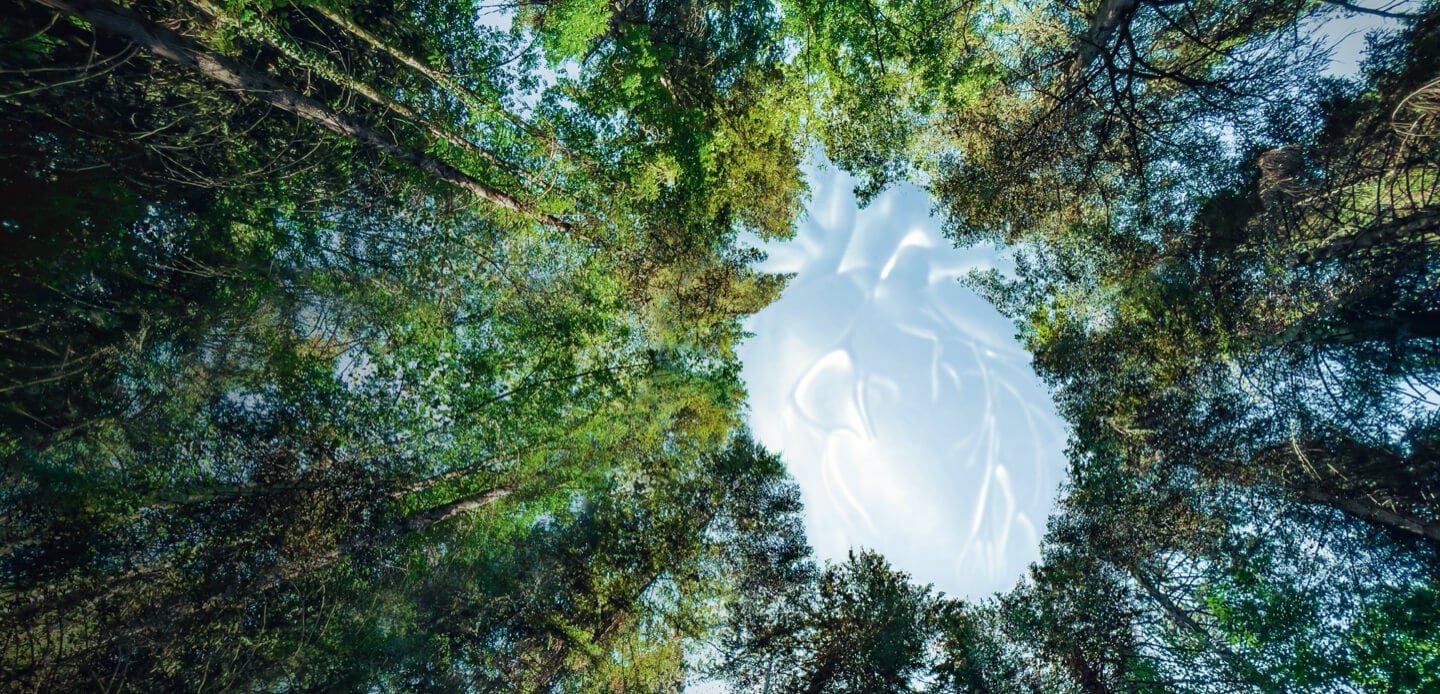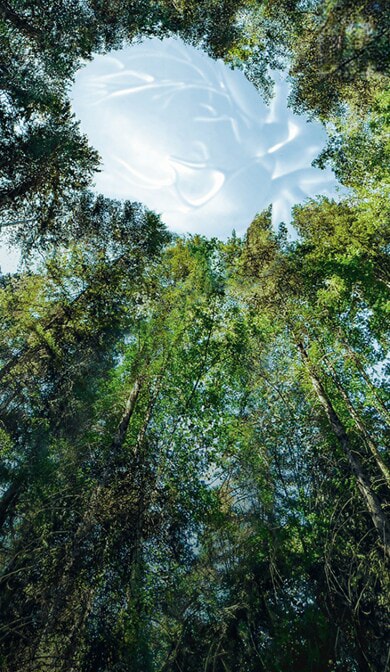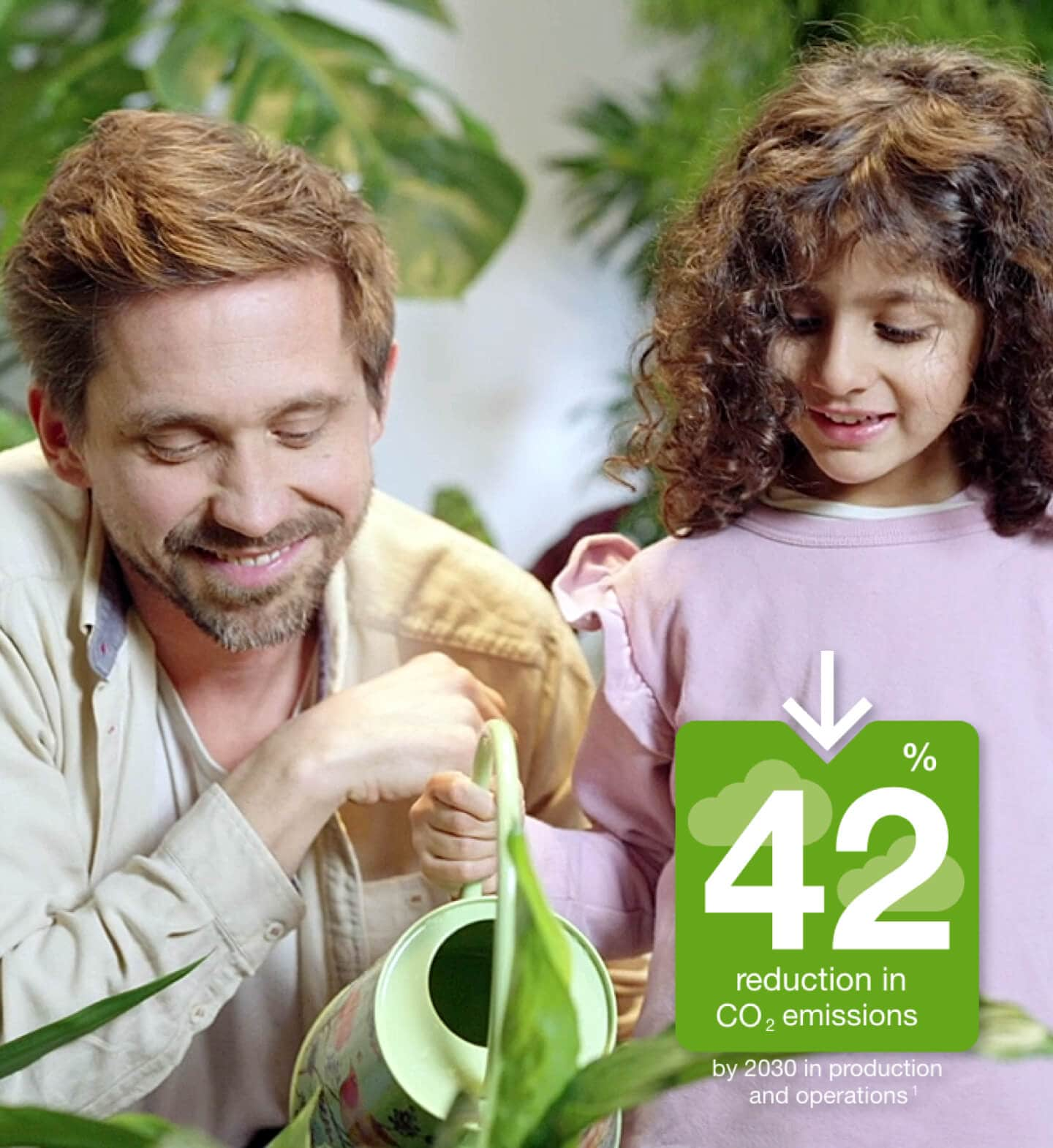Bayer Radiology is committed to improving medical imaging and reducing our impact on the environment by aligning with the global Sustainable Development Goals (SDGs) of the United Nations.
Our goals and efforts focus on driving sustainability in our operations and value chains, improving the ecological footprint of our products and providing offerings for our customers that increase efficiency in the workflow and help reduce resource use.
Accordion header

Production and Operations to Help the Planet
In our operations, we aim for a 42% reduction of CO2 emissions by 2030,1* a transition to renewable energy, and plan to offset remaining emissions with compensation certificates committing to be climate neutral by 2029.
And we’re already making strides: our manufacturing facility in Rydalmere, Australia operates exclusively on green, renewable energy.2
Read the Bayer Sustainability Report
Responsible Water Usage With Every Drop
We’re evaluating water usage throughout all of our manufacturing processes to ensure we’re being as eco-friendly as possible: at our production site Bergkamen, Germany, we’ve upgraded our water waste management to maximise the clean water we can return back to the ecosystem.


Pallets for the Planet
Thinking sustainably means rethinking product and resource lifecycles: with the Green Pallets initiative, we are replacing the entire operating side of the European Pallet Association (EPAL) pallet system with an eco-friendlier version, which lasts longer and performs better.
Our Green Pallets are made from 100% recycled plastic and are 100% recoverable at the end of their lifecycle.3,4
Cutting Emissions Throughout the Entire Value Chain
We investigate every aspect of our products, including shipping and supply chains. We have requested our supply chain partners follow stricter environmental and social standards and are investing in electric delivery vehicles and bikes to help reduce CO2 emissions.
With these initiatives, Bayer is helping to limit global warming to 2°C and reduce CO2 by at least 12.3% in 2029 compared to the 2019 baseline.1 We are doing our part and asking our partners to do the same, to protect our planet for today and for generations to come.


Sustainable Product and Packaging Design
We’re optimising our product and packaging designs, as well as our service and maintenance to reduce our impact on the environment. To reduce waste, we are developing smaller packaging and using recyclable materials wherever possible.
And in addition to our long history of providing products that are built to last, we also offer VirtualCare® to enable remote equipment diagnostics to avoid unnecessary travel while maximising uptime.

Return Old Devices
With our Injector Recycle Program, we make safe and responsible disposal of our systems easy and accessible and recover key parts for reuse wherever possible.
Since its launch in 2022, we have already salvaged over 1000 kg of hardware and electronics across the EU and US.5
Additionally, retired IT equipment is recycled through eLoop – a program which follows a circular economy model for product disposal. Vetted downstream processors extract metals and plastics for reuse where available.

Creating Smarter Workflows for Clinics
Helping our customers to do more with less has always been our goal and contributes to a more sustainable radiology workflow by providing access to more patients while reducing resources and procedural waste.
Save Time and Resources
We’ve introduced a suite of Workflow Solutions software products, such as //Smart Protocols, that enable automation and digitalisation of manual data entry, optimise workflow efficiency to save time, and provide data analytics to generate insights that help optimise consumption and reduce average contrast dose volumes to patients.6
We also offer a portfolio of multi-patient fluid delivery systems, such as MEDRAD® Centargo, that when combined with larger contrast media bottles can maximise re-usability and reduce per-patient waste down to a single tubing set.


Reducing Paperwork, and Paper Consumption
By making the move to more digital communications, we have been able to reduce our reliance on paper. Every year the consent and registration forms for patients consume an estimated 2 billion sheets of paper in Europe alone. This amounts to almost 6 square kilometers annually.7,8**
Our solutions help our customers reduce this reliance on paper while unlocking the efficiency, cost savings, and operational benefits of going digital.
Footnotes
- *Comprises direct emissions (Scope 1) and indirect emissions (Scope 2, market-based) from Bayer sites whose annual energy consumption exceeds 1.5 TJ. Return to content
- **Internal data shows that 1,983,201,051 sheets of paper are consumed per year. Using this figure, 6 km2 was calculated: 1,983,201,051/15,000 sheets of paper per tree=132,213.4 trees, 132,213.4/22,450 trees per km2 =5.89 km2. Return to content
References
- 1. Bayer. Our Targets to Be Met By 2030. Accessed October 2023. https://www.bayer.com/en/sustainability/targets Return to content
- 2. Bayer. Data on file. Green Energy Agreement. REF-PF-RAD-ALL-0416. 2022. Return to content
- 3. Business Chief. Bayer Italy’s supply chain transformation. Accessed October 2023. https://businesschief.eu/company-reports/bayer-italys-supply-chain-transformation Return to content
- 4. Michele Palumbo. Green Pallet Bayer 2.0. Accessed October 2023. https://www.linkedin.com/pulse/green-pallet-bayer-20-michele-palumbo Return to content
- 5. Bayer. Data on file. Memorandum of Reference. REF-PF-RAD-ALL-0415. 2023. Return to content
- 6. RAD Magazine. Personalising CT with Centargo and Smart Protocols, because everybody is different. Accessed October 2023. https://www.radmagazine.com/personalising-ct-with-centargo-and-smart-protocols-because-everybody-is-different/ Return to content
- 7. Georgette Kilgore. How Many Pieces of Paper in a Tree (The Real Scientific Answer). Accessed October 2023 https://8billiontrees.com/trees/how-many-pieces-of-paper-in-a-tree/ Return to content
- 8. Our world in data. Number of trees per km2, 2014. Accessed October 2023. Return to content












